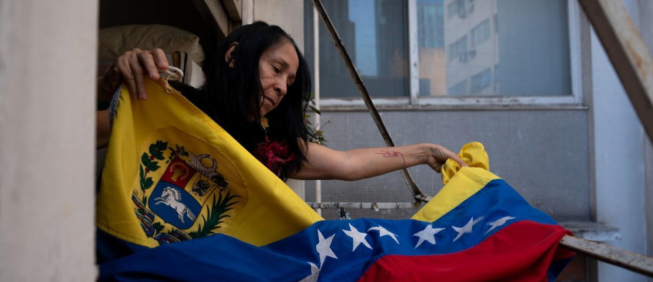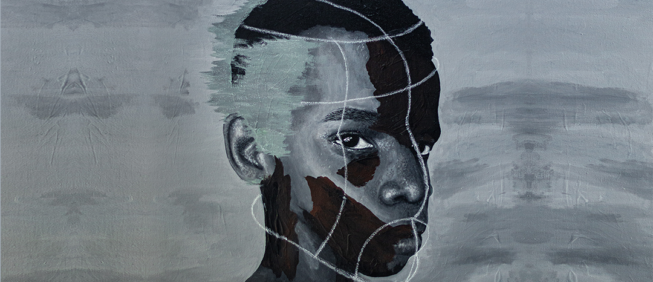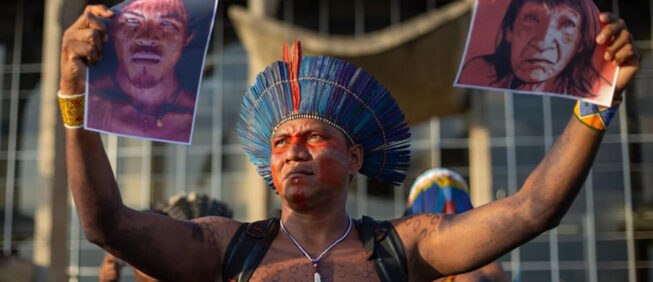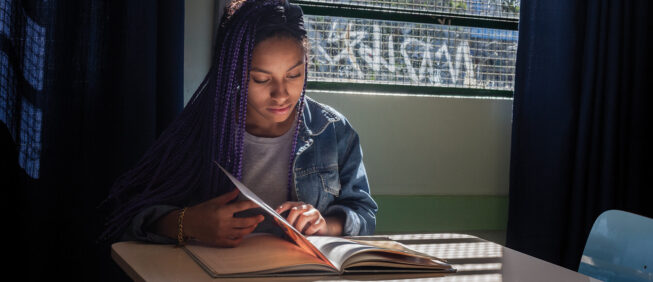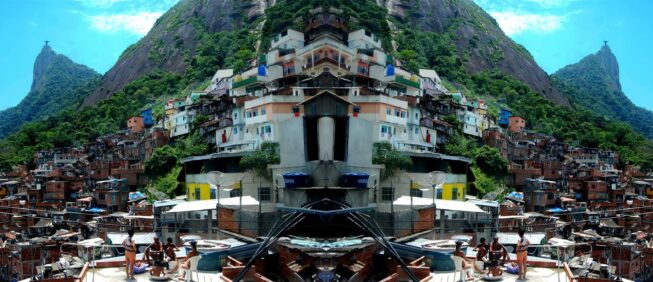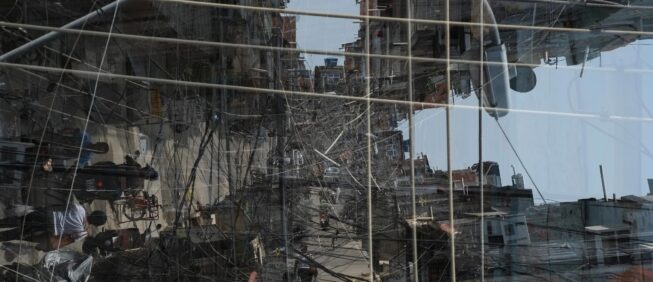Racialized hierarchies and blurred boundaries
The complexities of banal oppression
Mariam Barghouti
| Palestine |
20 de April de 2021
Often, the issue of Palestine comes mired with everything Israeli. Even in the academy, Palestine and Israel are examined in their relationship to each other. Yet, when we truly want to look within structural racism and oppression, we must admit that it goes deeper than Palestine and beyond Palestinians.
"Exile is so strong within me, I may bring it to the land" (Mahmoud Darwish)
In an interview, Mahmoud Darwish — dubbed the national poet of Palestine — said “exile is so strong within me, I may bring it to the land.” The quote was said in its own context and Darwish may have had an entirely different interpretation to it. However, I think many of us who have been exposed to chronic dispossession and persistent invalidation will eventually feel alienated to the point that even if we do eventually return home, we’re still alien. If we liberate Palestine only to still feel outcast, then why do we keep fighting?
Beyond all the poetics and rationalizations, we keep fighting because the violence of silence becomes so much that we are forced to begin envisioning something else. It is no wonder that Martin Luther King Jr.’s famous echo “I have a dream” resonates with so many. To dream means to expose very clearly — to make visible not the dream, but why we had to dream in the first place.
Palestine, ethnic identities, and boundaries
I recall when my parents moved us from Ramallah to Atlanta, Georgia. The American South is inundated with its own unreconciled history of racial racism, prejudice, and fear of threats. We had just packed up, in 2003, as the second intifada (uprising) was still erupting in full throttle in Palestine. As I entered my fifth grade classroom, I saw that it was predominantly Black. There were three white girls who seemed to have taken me in as one of their own. I remember one young girl, Holly, who casually told me “you know, we are the only white girls here. It’s hard, but we have to kind of stick together.” I never knew of racism based on color before then. I knew of racism as a Palestinian. Still, I somehow saw the overlap between Holly and the soldier pointing a gun at me as I exited the schoolbus in Ramallah.
In academia, I learned of the inability of one discipline to explain something that is relational, that is as imagined as it is tangible, equal parts romanticism and actual painful struggle. Our issue with understanding lies not only in a lack of information but also the way we organize that information. During my MSc at the University of Edinburgh, I took two different courses. One in the Sociology department and another in Political Science. For my final project in each, I dared myself to use the same resources for each research topic and to construct two different arguments for each class. More importantly, each argument had to be validated and backed up with the right evidence and counter-evidence.
When I succeeded, rather than being impressed with myself, I felt a certain disdain for the academy. It’s almost as though, if I organize my information in a certain way, I win. I found that academics are lawyers by their own merit and within their own agreements. As I began applying for my PhD in the US, I was told that, though it’s not said out loud, the American Academy doesn’t take the British Academy seriously. I remember that all I managed to respond at that moment was “how on brand of America.”
I found that academics are lawyers by their own merit and within their own agreements
The thing about American racism is that it didn’t end with the end of slavery and segregation. It morphed, transformed, changed. Its boundaries expanded a little, but they were still boundaries. The issue with academia is that it may have projected its own limitations onto reality. I have studied the literature of Postcolonial scholars, Critical Race Theory, Critical Whiteness Studies and more. Much of the similarities in scholarship is not in the lens they use but in a conclusion of visibility versus invisibility. It is not racism that is hidden; racism is visible, always. We only know to keep quiet because we have been told to do so. Racism is known but sidelined, addressing it means unpacking all the deeply wounding roots and systems we engage in and are impacted by. But racism, oppression, is not invisible.
We are chained in countless ways. Once, in a span of 14 hours in Israeli military and police detention, the handcuffs around my wrists became plastic hand-ties, which became a scarf tied around my wrists, which became metal chains that reached to my feet. I was chained at all times, and the handcuffs were no better than the plastic ties. The handcuffs just didn’t make me bleed like the plastic ties did. That’s the thing about racism, it is obvious. The soldier that used metal handcuffs was no better than the officer that chose to use plastic ties. In all cases, I was too afraid to challenge my chains, and every one of those soldiers and officers knew they were restraining me. It is concrete and tangible to the naked eye.
What we are unpacking in racist systems is the ways in which we mend and twist words and images to justify this racialized violence
What we are unpacking in racist systems is the ways in which we mend and twist words and images to justify this racialized violence. Perhaps it’s why we sometimes mistake racism for ideology rather than action. It was not long ago that we had Americans chaining Black men and women in cages as spectacles of “human zoos.”1 See https://www.rifemagazine.co.uk/2019/04/black-people-on-display-the-forgotten-history-of-human-zoos/ This was people calmly watching other people in cages, and whether they admitted it to themselves or not, I firmly believe that they did not all find it “proper.” That’s the thing about being proper, sometimes it’s the impropriety that lets us reflect together. To blur the boundaries, but to keep them blurred. Not to mystify, but to give the opportunity to understand.
Forging identities against others
Mahmoud Darwish has many famous poems. The one they teach us in primary school is “Record, I am an Arab.” The identity of individuals and groups is one facet of ethno-political conflict. It is an interplay of complex and interwoven multidimensionality (Malesovic, 2004: 116). Martin Luther King Jr. had a dream to bring forth change, but his vision of change challenged the comfort of those who reaped the privileges of inequality or had just enough to not want to risk the loss. But racism convinces people of either their inferiority or supremacy in relationship to others, challenging racism is planting doubt in that conviction. Holly was convinced of some racialized conviction towards Black Americans.
Racism convinces people of either their inferiority or supremacy in relationship to others, challenging racism is planting doubt in that conviction
Even as a child, she was taught not only to be afraid but also to act on that fear. To be on the offense, to remain preoccupied with the collective. After the signing of the 1993 Oslo Accords, Mahmoud Darwish’s poetry became more geared towards personal reflections. Some scholar suggested that this signaled a disenchantment with Palestinian political realities.2 Helit Yeshurun. “‘Exile Is So Strong Within Me, I May Bring It to the Land’ A Landmark 1996 Interview with Mahmoud Darwish.” Journal of Palestine Studies, vol. 42, no. 1, 2012, pp. 46–70. JSTOR, www.jstor.org/stable/10.1525/jps.2012.xlii.1.46 Inclusion and alienation are not distinct from one another, and they are not distinguished by one set of symptoms or criteria. I say symptoms because racism is a condition. It is a reality as much as it is conditioning, learning, internalizing.
Israeli practices against Palestinians are more than just demolition orders or the military detention of adults and children
If we unpack the Israeli state’s practices against Mizrahim, we can see how it takes form in simultaneous inclusion (“we-hood”) by presenting them as part of the Jewish collective, and exclusion (“us-hood”) through segregation practices and discriminatory policies against them as Arab and African. In trying to include them in the “we-hood” against the Palestinian threat, we notice efforts at “complementarization,” which, as Eidham (1971) notes, is a process to maintain internal cohesion. We distinguish different parts of our identity and prioritize them according to the powers we acquire.
Israeli practices against Palestinians are more than just demolition orders3 https://www.btselem.org/topic/punitive_demolitions or the military detention of adults and children.4https://resourcecentre.savethechildren.net/library/defenceless-impact-israeli-military-detention-palestinian-children It is the racialization of our identities into segments. Palestinians with Israeli citizenship are alienated not from Israeli society, but from other Palestinians and Arabs. Palestinians with Israeli citizenship are not only second class citizens in Israel, but first class citizens if placed against Palestinians in besieged Gaza. Racism categorizes others based on what role they can serve.
It is the racialization of our identities into segments
Mizrahim serve as Jewish labor, but when the riots of the 1950s happened in Wadi al-Salib in the district of Haifa, they were met with brutal force from Israeli police.51959 — Wadi Salib Riots: Culminating a Decade of Ethnic Discrimination.” Mo(Ve)Ments of Resistance: Politics, Economy and Society in Israel/Palestine 1931-2013, by Lev Luis Grinberg, Academic Studies Press, Boston, 2014, pp. 90–121. JSTOR, www.jstor.org/stable/j.ctt21h4xqw.9 It is kosher racism. Just as the Palestinian Authority needs Gaza to capitalize on the refugee argument, but when we protested their complacency in the besiegement of Palestinians in Gaza, we were met with brutal violence from Palestinian riot police and the national guard.6 See https://www.aljazeera.com/opinions/2018/6/16/why-is-the-palestinian-authority-attacking-palestinian-protests It’s Halal racism. Afterall, how can you be racist towards your own? Yet again, a mother can’t be abusive towards her own children, right?
In the 1950s, Israel signed Palestinian Druze into compulsory military service. They tried to do the same with the Palestinian Christian community in 2012.7 Melhem, https://www.al-monitor.com/originals/2015/04/israel-conscription-army-palestinian-christians-druze.html Racism finds the spaces within groups to nurture variants of itself. I am still unlearning the inherited betrayal I feel towards the Druze community that allowed this to continue. The only way I was able to begin unlearning was hearing of youth groups today who are mobilizing against Druze conscription into the military. The slogan was “Refuse: Your people will protect you.” The thing about Palestine is that racism is just one aspect of a larger colonization project. It’s not just “in-group” conflict.
Peace is the absence of conflict
Peace is the absence of conflict. Perhaps it’s why Darwish became disillusioned with it, because this is not a conflict, so how can we speak of “peace”? Peace, if we are honest, is not a process as much as it is a moment, an event. I learned in Palestine that peace only exists at two junctures. The first is before the eruption of war. The second comes as we tend to our injuries (the material, the physical, the emotional, the conscious and unconscious). I think it’s our need for peace and calm that keeps us from calling our actions what they are.
I learned in Palestine that peace only exists at two junctures. The first is before the eruption of war. The second comes as we tend to our injuries
The thing about calling out Israeli racism is that it pushed me to call out American racism, authoritarianism in Syria, Bahrain, Guatemala, Venezuela, Yemen, Saudi Arabia, all of it. The hardest part was calling out the Palestinian authorities for the tyrants that they are. You see, growing up I have been around Palestinian diplomats. They were the uncles and aunties that gave me candy, smiled tenderly, and cajoled me when I was being a child. Having grown up, I had to see that just because powerful people were good to me, my family, my loved ones didn’t mean their actions for the community were the same.
This is the hardest part about challenging racism, drawing the boundary between yourself and others. It’s why as Palestinians we speak not of Israel or Israelis, but of their actions. We are not trying to prove ourselves in relation to Israel. This is not a trial over who deserves the land more. This is a trial over systemic violence (the covert and the overt).
The thing about racism is that it’s good at making itself separate
Above, I tried to outline different experiences, because to speak of Israeli discrimination towards Palestinians is relational. It requires first that we speak of what is “Israeli.” I can speak of current Israeli apartheid practices against Palestinians, but if there is anything I have learned about racism, from academia and from personal experiences, it is that it’s there to preserve some power. It is entwined with citizenship rights, access to shelter, community, socioeconomics, territory, comfort. Racism is sustained by comfort. It changes according to context, and the ways and languages in which racism manifests itself often seem random and separate, but that’s because soldiers change.
Racism changes according to context, and the ways and languages in which racism manifests itself often seem random and separate, but that’s because soldiers change
The type of handcuff that was used on me varied according to rank and position, military or police. The general command to chain Palestinian detainees (no matter how young or old) was there. The way it is done varies depending on whether it was a time I was held in Binyamin Police Station near Jerusalem or Ofer Military Court near Ramallah. This is also why I shied away from giving and naming different episodes of violence against Palestinians. It’s because, for us, passing through a checkpoint is not just one story; it is one moment in our day. Sometimes more than one.
It’s also why I shy away from speaking about the Nakba that Palestinians commemorate every year on May 15 to mark the mass dispossession of Palestinians in 1948. Why speak of the past when the present is violent and oppressive and requires action? Racism counts on being held accountable for its past, but as long as it is past, then all is well.
I started this essay by suggesting that racism transcends Palestine or Palestinians. I moved from Mahmoud Darwish to Martin Luther King. I spoke of the figureheads and a moments in my personal experience in the American South, from classroom talks to bus stop greetings. I spoke about the academy and a moment of physical restraint. I presented these moments briefly and I tried to weave these points together to make an argument. I can argue that these narratives are as interconnected just as I can argue they are separate.
The thing about understanding how racism works is that it’s like going through a chess game. You can find patterns in chess, certain consecutive moves that yield a win. The thing about how racism works is that it doesn’t work without chess pieces. Racism isn’t the game of chess, it is those who are playing. And rather than individual pieces, it is entire communities being moved in different directions — actually moved, just like a chess player picks up a piece. It also takes more than one player, generally.
I draw on different examples to try and capture the Palestinian context with Israeli racism, because ethno-political antagonisms are situated in a perpetual state of relations that transpire through overlapping processes. Israel and Palestine. I once entertained the thought of all Palestinians being given an Israeli citizenship and we’d all be Israel. But what keeps me and others from this thought is not jingoism or patriotism, it is that being Israeli is not just a name. It is an identity.
The issue with colonization, racism, and oppression, is not the identity in and of itself. Identity changes as quickly as we change as beings. It is that it pits one identity against another. It is the imposition of a truth that is constructed to impose that we accept our beatings. It expects that enslaved men, women, boys, and girls wear their chains and smile at the visitors in the zoo. Racism cannot accept differences beyond having to reconcile that we share the same globe. It accepts difference as a threat. It does not celebrate identity as much as it emphasizes its greatness through terrorizing. Racism is not a thought, and it is not separate. It is the way we prioritize access.
That is racism in Palestine. It is not the negation of the Palestinian by Israel; it is the emphasis of the Palestinian as criminal.
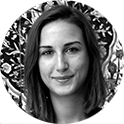
Mariam Barghouti | Palestine |
Mariam Barghouti is a writer and researcher. She received her BA from Birzeit University in English Literature and Language with a focus on sociolinguistics, and Masters of Science from the University of Edinburgh in Sociology and Global Change with a focus on racialized hierarchies. Her academic research interests global historical sociology intra-Israeli racialization. She has worked in the fields of journalism and reporting, digital production, advocacy, and evidence based research and data analysis. She has written on socio-political developments in the Middle East with a focus on the Levant. Her political commentary was featured in Al-Jazeera English, the New York Times, the Guardian, amongst others. Her sociological research revolves around local-global social dynamics, with a focus on policy, gender, socioeconomic inequalities, and power-relations. She currently resides in Ramallah.

